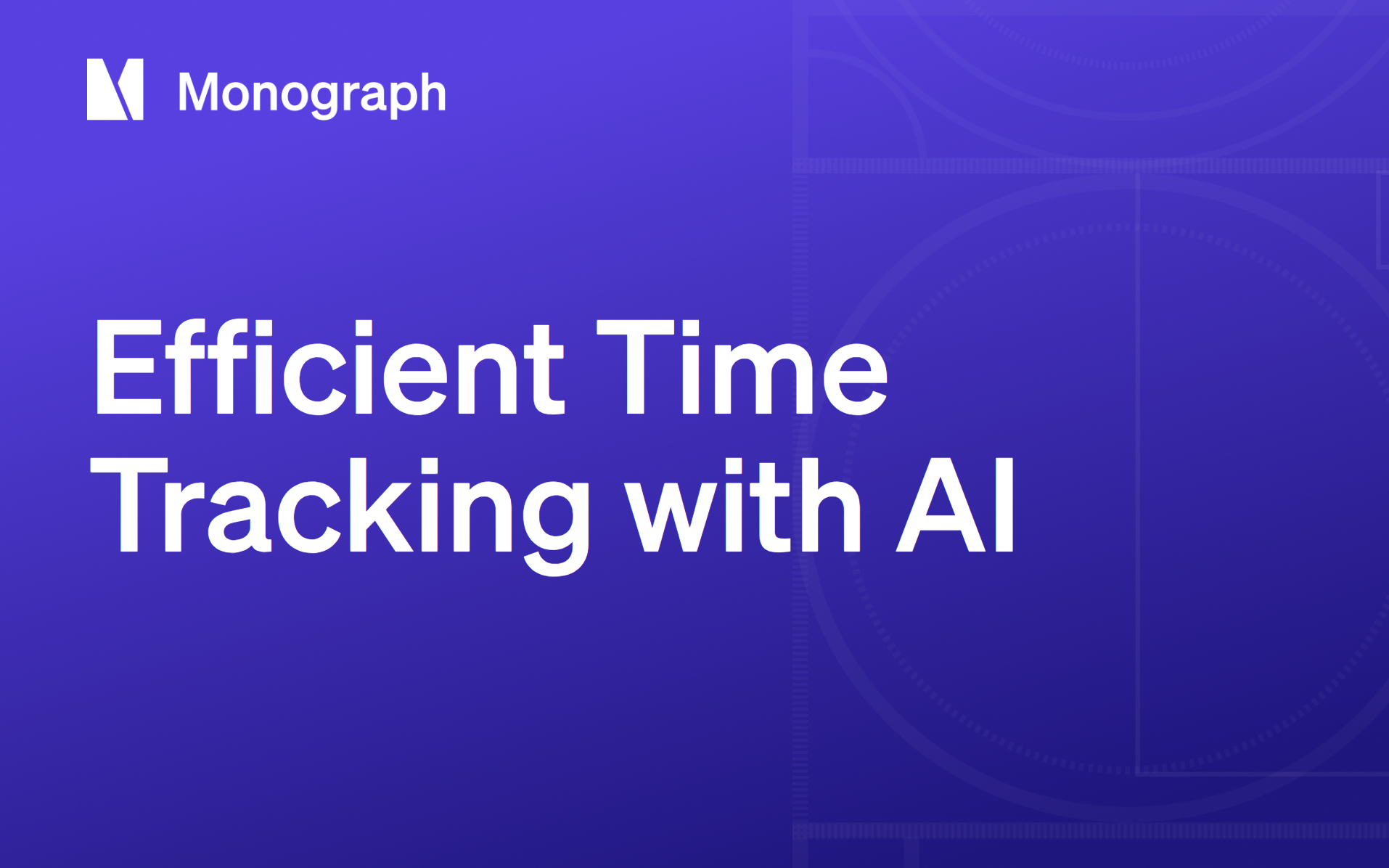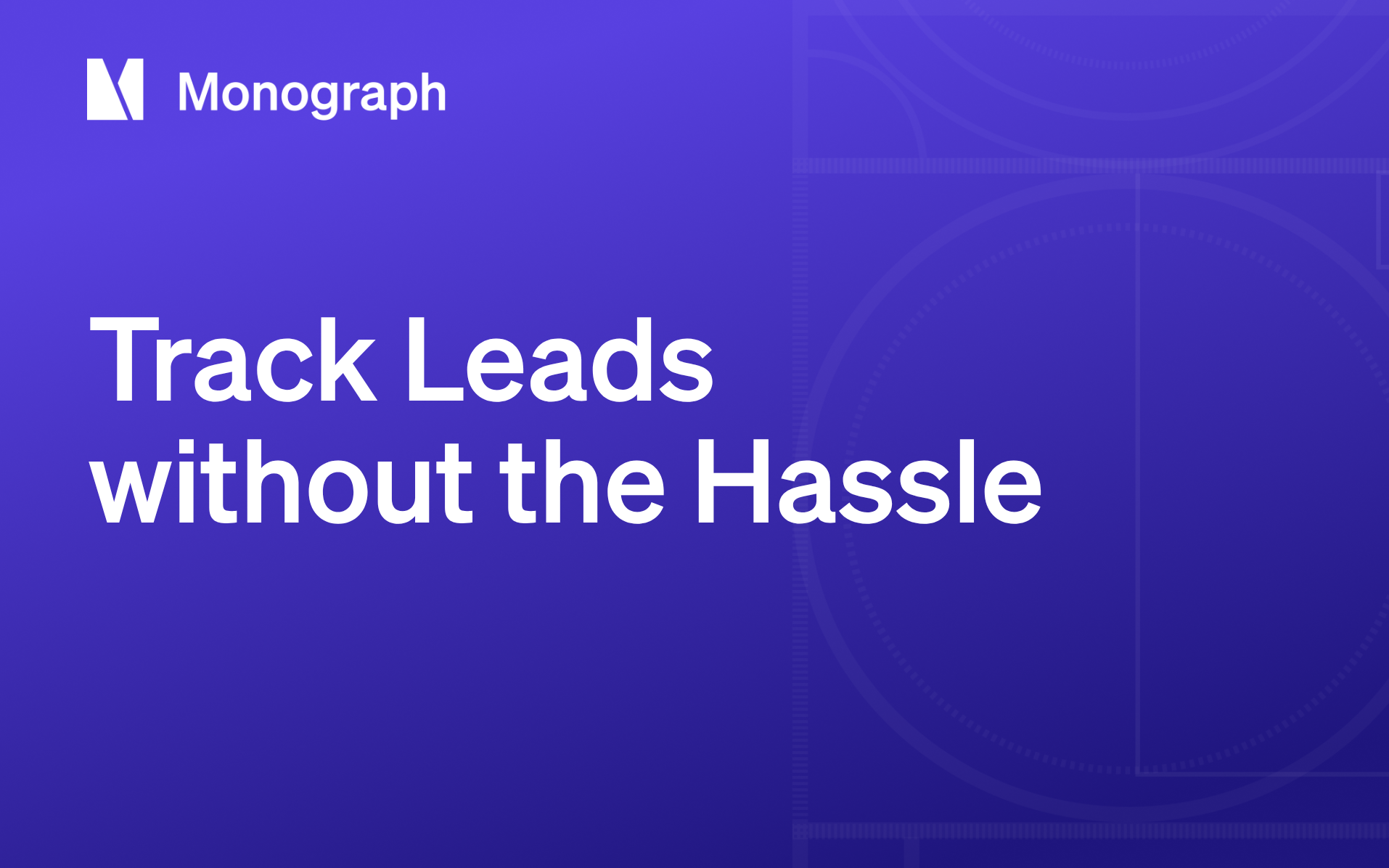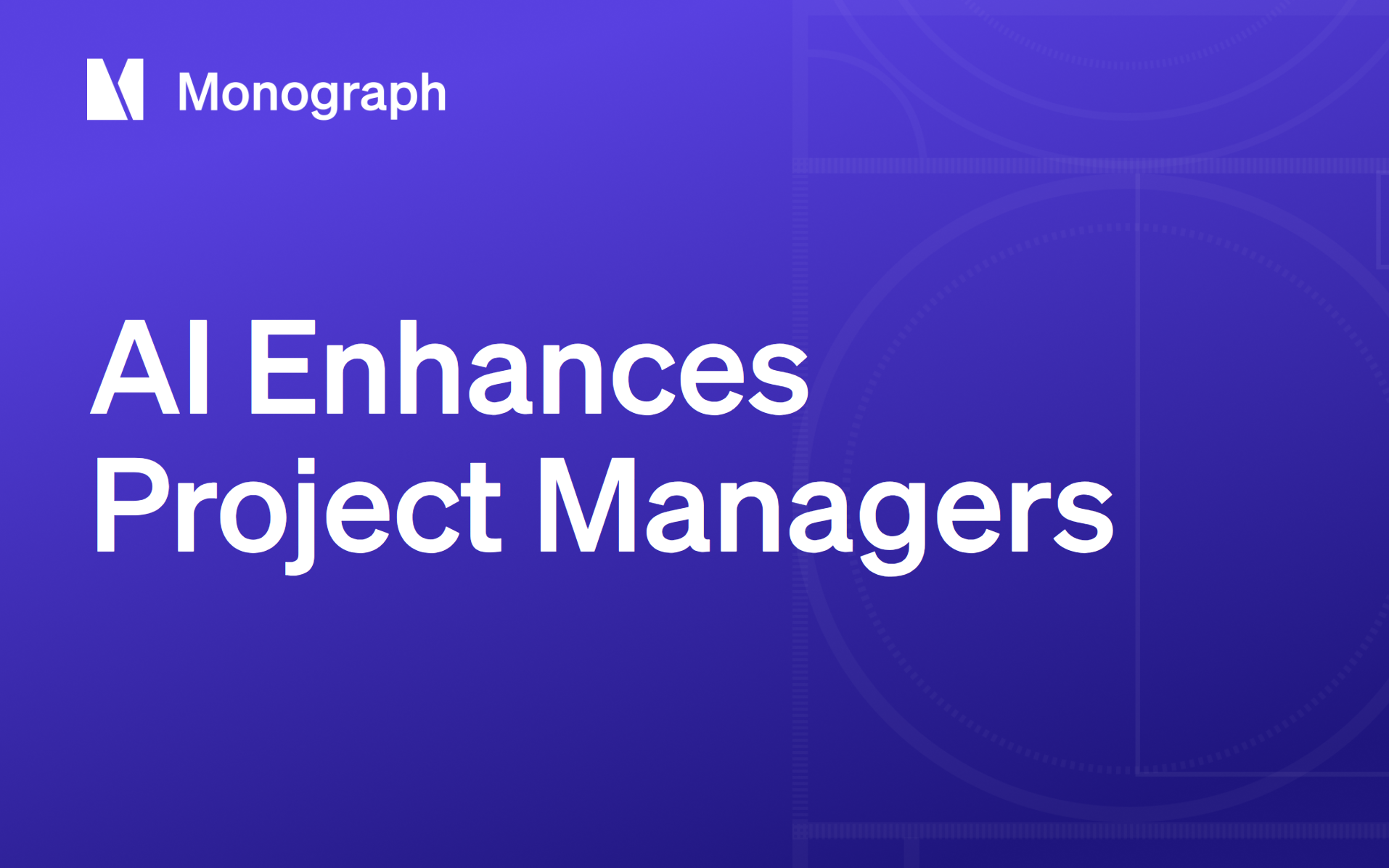Contents
You opened your firm to design buildings and solve complex problems, not to sift through spreadsheets. Yet your team often spends significant time hunting for budget data scattered across files and email chains. That's design time leaking straight out of the studio.
Firms that replace manual logs with intelligent tracking systems recover 20-30% more billable hours every month. More billable hours mean healthier margins, faster hires, and breathing room when projects stall. This shatters the myth that architects and engineers are "good at math, so the money takes care of itself." Creative talent alone doesn't cover the overhead, systematic business management does.
Project pauses create another challenge. Deadlines shift, clients rethink scope, and suddenly your carefully balanced workload turns upside down with idle staff here and overworked teams there. Without real-time visibility into who's working and what's still billable, you're making decisions blind.
AI time tracking changes this dynamic entirely. By automatically logging work, matching hours to project phases, and translating effort into clear financial signals, it helps you act before small slips become budget problems. The sections that follow explore how the technology works, the benefits it delivers across the project lifecycle, and a practical roadmap for bringing your time data, finally, into sharp focus.
What Is AI Time Tracking?
AI time tracking watches how you work, whether you're detailing in Revit, coordinating with consultants, or walking a job site, and automatically converts that activity into accurate timesheets. Think of it as having an invisible project coordinator who never forgets to log your hours.
The technology combines several capabilities that matter for A&E work:
- Pattern recognition identifies which drawings, models, or calculations belong to each project phase
- Natural language processing reads your calendar invites and email subjects to categorize meetings correctly
- Calendar and inbox parsing fills gaps you forgot to track
- Geo-fencing verifies time spent on site through your mobile device
Every minute gets captured automatically, eliminating the Friday afternoon scramble to reconstruct your week. The system learns your work patterns and gets better at categorizing time to the right project and phase. Real-time analysis turns those logged hours into actionable insights, flagging budget overruns or underutilized team members before they become problems.
Rather than simply recording time, these systems provide the visibility you need to run profitable projects while focusing on design and technical work instead of administrative coordination.
The Traditional Time-Tracking Problem in A&E Firms
If you still rely on spreadsheets and memory, you already know the pain. Entire mornings disappear while you or your project manager (PM) hunt for "the latest" budget number. Teams waste valuable hours each week chasing data buried in disconnected files and emails, a problem that budget tracking systems consistently identify as a major productivity drain.
Without live information, projects drift. By the time an overrun shows up on a Friday status report, you're already dealing with serious problems:
- Hours logged to the wrong phase, throwing off your budget tracking
- Consultants billing beyond scope without early warning flags
- Margins evaporating while you manage blind and react instead of steering
- Manual reconciliation pushing invoices into 30-90 day cycles
- Tens of thousands locked in work-in-progress, straining cash flow
Many billing disputes trace back to delayed invoicing and missing backup detail, both rooted in shaky time logs.
The admin burden lands on your most expensive people. Principals, project managers, even senior engineers spend late nights cleaning timesheets instead of designing or solving technical problems. It's busywork that saps morale and profitability.
Field conditions make everything worse. On-site architects and inspectors juggle clipboards, cameras, and client questions; starting a timer is the last thing they remember. Traditional tools ignore this reality, and mobile entries get forgotten until days later. The lack of mobile-friendly logging leaves critical CA hours unbilled, forcing you to absorb the cost.
Every spreadsheet you touch reminds you that brilliant design alone can't keep a firm profitable.
How AI Time Tracking Works
If you've ever spent Monday morning guessing where last week went, intelligent tracking feels like switching on the site lights after working in the dark. The software captures your digital footprints automatically. Every minute in Revit, email, or on-site gets logged in the background, including GPS verification for site visits, then surfaces on timesheets ready for one-click approval.
The system learns your patterns. After watching how you move from schematic sketches to structural coordination, machine-learning models predict the right project and phase for each time block. Within weeks, you eliminate the usual "where do I book this?" friction.
Upload a signed contract, and platforms like Monograph translate fee tables into budgets and schedules instantly. Because every hour connects to a live budget, the system can recommend staffing assignments based on availability and expertise. Managers see the impact through Monograph's MoneyGantt™ visualizations, with planned, logged, invoiced, and paid hours stacked like a color-coded section cut. Overruns flash red before they spiral.
Picture this: a field designer finishes a punch-list walk-through, clocks out of the geo-fence, and by the time she reaches the office, those two hours are logged to Construction Administration, the budget is updated, and accounting gets nudged for billing. You get accuracy, your team gets time back, and projects keep moving.
Core Benefits of AI Time Tracking for Architects & Engineers
You already know that great design and precise calculations mean nothing if the business side can't keep up. Intelligent tracking systems turn timesheets from administrative burden into real-time business intelligence that protects both your creative work and your profit margins.
Accuracy & Billing Transparency
Manual entry creates gaps that cost you money. Automated tracking captures every minute in the background, eliminating the billable hours that typically disappear:
- Forgotten site visits that never made it to timesheets
- Uncaptured CAD sessions during intense design sprints
- Whole afternoons lost coordinating consultants across disciplines
- On-site inspections logged days late from memory
- Meeting time that fell through the cracks
Task categorization happens automatically, and GPS verification ensures billable hours don't disappear. Detailed logs give clients the transparency they expect, ending invoice disputes and accelerating payment cycles.
Profitability Insight
Seeing a project's financial health shouldn't require hunting through scattered spreadsheets and budget files. Tools like Monograph's MoneyGantt™ map planned, logged, invoiced, and paid hours in one visual dashboard, so you spot margin problems before they become crises. Time data flows directly into budget tracking, letting you monitor profitability by phase, discipline, or consultant and adjust resources while you can still fix things.
Admin Time Savings
A&E professionals spend hours each week wrestling with timesheets and budget updates, work that doesn't improve designs or make buildings safer. Automated capture and one-click approvals eliminate most of that administrative overhead, freeing you to focus on design reviews and technical problem-solving.
Data-Driven Staffing & Utilization
When AI surfaces real-time workloads, you can balance teams like a structural engineer balances loads, identifying stress points before something fails. Dashboards flag over- or under-allocation early, protecting junior staff from burnout while keeping senior hours billable. CFOs track realization rates, project managers monitor delivery schedules, and everyone works from the same accurate data.
The result: fewer financial surprises, healthier project margins, and more time for the creative and technical work you signed up to do.
Practical Applications Across the Project Lifecycle
Think of intelligent tracking as a quiet project manager that shadows every phase without getting in the way. During concept work, it builds realistic hour-by-hour estimates using data from similar jobs, so your proposals stop bleeding hidden effort you never bill for. That forecast isn't guesswork; it's built from the historical logs you've already captured and refined by machine learning algorithms.
Once you move into Design Development, the system pre-loads your team's timesheets based on the planned workflow. With the right plugins and setup, it can track how long modeling takes in Revit, including time spent on coordination calls and red-line reviews, helping monitor for potential project drift. When a drafter burns half the budget on façade studies, you get an alert before the overage snowballs into a real problem.
Construction Documents are where the system really pays off. Every hour spent on sheet production, spec writing, or QA checks gets auto-tagged to the right phase and deliverable. Those logs sync directly with your budget dashboard, so you see a live burn-down instead of waiting for weekly spreadsheet updates that are already out of date.
Construction Administration is where manual tracking usually falls apart completely. Mobile apps with GPS verification capture site-visit time the moment you step onto the jobsite. Field reports, punch lists, and requests for information (RFIs) show up on the client invoice without you chasing down paper later. Free consultant accounts mean your structural engineer can log inspection hours in the same system, eliminating the month-end email hunt that everyone dreads.
Because every phase feeds the same database, your finance team can pull WIP or cash-flow snapshots on demand instead of begging project managers for updates. You get one continuous thread of data from first sketch to substantial completion that tells you, in plain numbers, whether the project is actually paying for itself.
Evaluating AI Time-Tracking Tools: Must-Have Features
Choosing a tracking platform feels a lot like selecting a structural system, you only notice it when it fails. To avoid hidden cracks, look for these essential features built for the way A&E teams actually work:
- A&E phase structure and terminology that matches Schematic, DD, CD, and CA without forcing translation into generic categories
- User-friendly interface with clean dashboards and frictionless entry that keeps designers and field engineers engaged
- Native QuickBooks and Stripe connections that cut your billing cycle nearly in half by flowing hours straight to invoicing
- Mobile capture with geo-fencing that locks every site visit, inspection, and field survey to the right project automatically
- Real-time reporting and dashboards with live budget burn, utilization, and profitability views for current decisions
- Role-based permissions and free consultant seats so external partners can log time without accessing your financial picture
Ask yourself: Does the software speak my language? Will my team actually use it? Can I see phase, fee, and cash position in one place? Monograph checks every box and adds MoneyGantt™ for instant visual clarity because you deserve to see the whole structure, not just the beams.
AI Time Tracking Implementation Roadmap
Rolling out automated tracking isn't a software install, it's a project that deserves the same discipline as your construction documents. Follow this five-step approach to achieve substantial revenue improvement in your first year.
- Audit the current mess. Map every spreadsheet, app, and handshake process people use to log hours or build invoices. You'll usually discover duplicate data entry and find that a majority of your staff's time goes toward hunting for budget details across scattered files instead of designing.
- Choose an A&E-specific platform. Generic trackers don't understand phases or consultant mark-ups. Tools like Monograph pair a 30-day onboarding window with budget and phase templates ready to go, so you start in familiar territory rather than translating tech jargon.
- Run a single-project pilot. Pick a real job with a cooperative PM, flip automated tracking on, and measure two things: captured billable hours and days from work complete to invoice sent. The difference becomes your proof of concept.
- Train and set utilization targets. Walk every role, from intern to principal, through daily capture and show how the data surfaces in MoneyGantt™. Tie targets to visible metrics, not abstract percentages, so people see the connection between accurate logs and project health.
- Review KPIs monthly and iterate. Block 30-minute retrospectives to compare planned versus actual hours, adjust workflows, and address edge cases like field inspections that require GPS logging.
Some firms move from pilot to firm-wide adoption within a quarter, but this is not the norm. Keep change management simple: spotlight early wins, quantify the admin hours clawed back, and remind skeptics that better data isn't bureaucracy, it's the foundation for more design time and a healthier bottom line.
Start Capturing Every Billable Hour
Intelligent tracking eliminates the hunt through spreadsheets. Your hours flow straight into Monograph's MoneyGantt™ clarity. Every site visit, CAD sprint, and consultant call gets logged automatically, giving you real-time dashboards to steer projects instead of just reporting on them after the fact.
Firms using these systems report capturing previously missed billable hours, directly improving profit margins and cash flow. Think of it as turning time tracking from administrative overhead into the structural support your best design and engineering work needs.
Stop losing billable hours to manual tracking. See how Monograph works.
Frequently Asked Questions
What's the difference between AI time tracking and traditional time tracking?
Traditional time tracking requires you to manually start and stop timers or reconstruct your day from memory. AI time tracking runs in the background, automatically detecting what you're working on through application usage, calendar analysis, and location data. The result is more accurate logs with less effort from your team.
Will AI time tracking work for our firm's specific workflow?
A&E-specific platforms like Monograph are built around standard project phases (Schematic Design, Design Development, Construction Documents, Construction Administration) that match your actual workflow. The system adapts to your phase structure and learns your team's patterns rather than forcing you to change how you work.
How long does it take to see ROI from AI time tracking?
Most firms see measurable improvements within the first 30-60 days. You'll capture more billable hours immediately, reduce time spent on administrative tasks within weeks, and have solid profitability data for decision-making by month three. The billing cycle improvements and recovered hours typically pay for the software several times over in the first year.
Can consultants and external team members use the system?
Yes. Platforms like Monograph offer free consultant accounts with appropriate permission levels. External partners can log their time and expenses directly in your system, eliminating the month-end scramble to collect timesheets and reconcile consultant billing.
What happens to our historical project data when we implement AI time tracking?
Quality AI time tracking systems learn from your historical data to make better predictions about staffing needs, phase durations, and project costs. This historical intelligence becomes increasingly valuable over time, helping you price new projects more accurately and staff them more efficiently.





